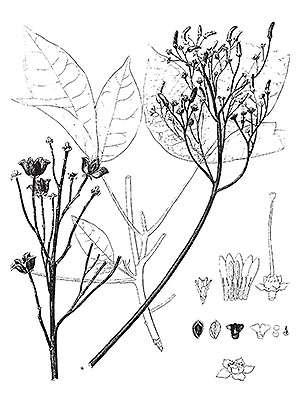Kaholuamanu Melicope (Melicope macropus)
The Kaholuamanu Melicope was restricted to the Kaholuamanu region of Waimea on the island of Kaua’i, Hawaiian Islands.
The species was last recorded in 1987, 1919 and finally in 1997 and was never found since, it may be extinct. However, the region, where this species is known to have occurred, is privately owned, thus no surveys have been conducted to relacate the species, which in fact might well be still surviving. [1]
*********************
References:
[1] Kenneth R. Wood: Survey results for eight possibly extinct plant species from Kaua’i, Hawai’i. Prepared for the U.S. Fish and Wildlife Service, FWS Agreement No. F12AC00737. 293 pp.. 2015
*********************
edited: 03.09.2020

